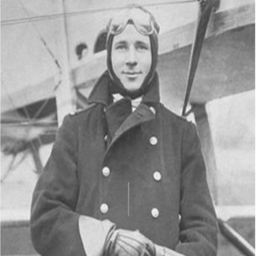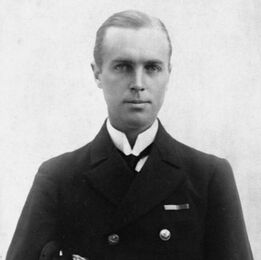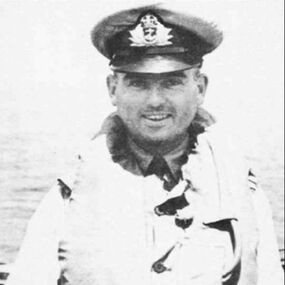|
The church displays a memorial to four naval aviators who were recipients of the Victoria Cross. The Victoria Cross is the highest military decoration and prestigious award for valour 'in the face of the enemy'. It takes precedence over all other orders, decorations and medals. READ ABOUT THEIR STORIES BELOW...  Flight Sub Lieutenant Reginald Alexander John Warneford VC Born 15 October 1891 - Darjeeling, British India Died 17 June 1915 – Buc Aerodrome, France At the outbreak of WWI, ‘Rex’ Warneford was in Canada awaiting return to India as an employee of the British-India Steam Navigation Company. Instead, Warneford sailed to Great Britain where he joined the Army but quickly transferred to the Royal Navy Air Service. On completion of pilot training, and a brief spell with 2 Wing on the Isle of Sheppey in Kent, Warneford was posted to an operational unit at Veurne on the Belgian coast. Over the next few weeks Warneford was involved in attacks on German troops and guns, as well as actions against enemy aircraft, where he gained a reputation as an aggressive and effective pilot. On 7 June 1915 over Ghent in Belgium Warneford, flying a Morane-Saulnier Parasol monoplane of 1 Squadron, attacked the German airship LZ 37 returning from an attempted bombing raid on England. He chased the Zeppelin from the coast near Ostend for nearly an hour and, despite its defensive machine-gun fire, eventually succeeded in dropping his six 20lb bomb payload one of which caused a massive explosion destroying the airship completely. The huge blast overturned Warneford’s aircraft causing it to nose dive momentarily and stopping the engine. Having no alternative he had to land behind enemy lines but, after effecting repairs on a broken fuel line, he managed to restart the engine and return his aerodrome in spite of fog. On hearing of his daring exploit and for being the first airman ever to destroy a Zeppelin in aerial combat, King George V awarded him the Victoria Cross immediately. He was sadly killed ten days later in an aircraft crash at Buc, close to Paris, just hours after receiving the Légion d'honneur from the French Army Commander in Chief. Warneford was repatriated to England where some 55,000 mourners attended his military funeral at Brompton Cemetery in London.  Squadron Commander Richard Bell Davies VC DSO, AFC Born 19 May 1886 - Kensington, London Died 26 Feb 1966 - Royal Naval Hospital Haslar, Hampshire Richard Bell Davies was orphaned at the age of six and was brought up by his uncle Dr Edwin Clifford Beale. He enlisted in the Royal Navy in 1901 and nine years later he took private flying lessons. Bell Davies was accepted into the Naval Wing of the Royal Flying Corps, which became the Royal Naval Air Service on 1 July 1914. Bell Davies was a highly decorated Vice Admiral by the end of his naval career becoming the first Fleet Air Arm officer to reach flag rank. However he was decorated twice in the same year as a young man during WWI; the Distinguished Service Order for services rendered in an aerial attack on Dunkirk, France on 23 January 1915 despite being badly injured in the thigh and the Victoria Cross on 19 November 1915. Bell Davies was posted to the Dardanelles in command of 3 Squadron, Royal Naval Air Service. It was whilst leading a raid at Ferrijik Junction, Bulgaria that he won his Victoria Cross for the first ever combat search and rescue by an aircraft. He saved a fellow pilot who had been forced to land in Bulgarian territory after his aircraft was hit; Bell Davies ignored enemy fire and courageously flew in to pick him up. On 24 September 1918 Bell Davies flew his Sopwith Strutter off the deck of HMS ARGUS, the world’s first through-deck aircraft carrier, and landed on the same deck while underway at sea, thus achieving another milestone in Naval aviation. Before the end of WWI, in addition to his Victoria Cross and Distinguished Service Order, he had been mentioned in despatches for service in France and the Gallipoli campaign, awarded the Air Force Cross and Croix de Guerre with Palm. Known for his pioneering spirit Bell Davies was innovative and always experimenting. Not surprisingly he continued to guide the development of naval flying throughout the interwar years. During WWII Bell Davis was promoted and appointed Rear Admiral Air Stations. He finished full time service in May 1941 but then volunteered for the Royal Naval Reserve serving in a reduced rank as Captain of the escort carrier HMS DASHER. He eventually retired in 1944.  Lieutenant Commander Eugene Kingsmill Esmonde VC DSO Born 1 March 1909 - Thurgoland, Yorkshire Died 12 February 1942 - English Channel In January 1939 Eugene Esmonde, already a qualified Royal Air Force and civilian pilot, received a letter from the Admiralty offering him a commission as a Lieutenant Commander in the newly formed Royal Naval Air Branch. He accepted, reporting to Royal Naval Air Station Lee-on-Solent, Hampshire for refresher training before duty. Esmonde took command of 825 Squadron in May 1940 on board HMS FURIOUS and later embarked on HMS VICTORIOUS. It was from the Victorious that Esmonde led his Squadron in an attack against the German battleship Bismark on the night of 24 May 1941, for which he was awarded the Distinguished Service Order. On 12 February 1942 the six Fairey Swordfish Torpedo Bombers and aircrews of 825 Squadron were stationed at Manston, Kent in preparation for a night attack on the German Battle-Cruisers Scharnhorst and Gneisenau as well as the heavy cruiser Prinz Eugene, which were entering the Straits of Dover strongly escorted by some thirty surface craft ships. Promised fighter cover of five Spitfire squadrons, Esmonde agreed to lead 825 in a risky daylight attack and at 12.25pm they took off. Only ten Spitfires rendezvoused with the Swordfishes so, with only a meagre fighter escort, 825 Squadron pressed on and engaged the mighty Germany battle group. Against the huge guns of the enemy cruisers and the power of the Luftwaffe, the slow, out-dated Swordfish with their fabric wings stood little chance. Almost at once Esmonde was shot down, but the remainder of his Squadron carried on to launch a heroic attack, in which at least one torpedo is believed to have struck its target. All the aircraft were lost and just five of the eighteen men who set out from Kent lived; four of whom were wounded. Lieutenant Commander Esmonde was posthumously awarded the Victoria Cross, gallantry awards were bestowed on those who survived and a Mention in Despatches was given to those who died. Seven weeks later Lieutenant Commander Esmonde's body, still in his lifejacket, was washed ashore in the Thames Estuary near the River Medway. He was buried in the Woodlands Cemetery, Gillingham, Kent on 30 April 1942.  Lieutenant Robert Hampton Gray VC DSC Born 2 November 1917 - Trail, British Columbia Died 9 August 1945 - Onagawa Bay, east coast of Japan Robert ‘Hammy’ Gray enrolled in the Royal Canadian Naval Volunteer Reserve in 1940, aged 22, and commenced training as a naval pilot with the Fleet Air Arm in September the following year. Gray went on to pilot Hawker Hurricanes in the African campaign for two years with 747 Squadron before transferring to No. 1841 Squadron embarked on HMS FORMIDABLE, flying the Corsair fighter aircraft. On 29 August 1944, Gray was mentioned in dispatches for his participation in an attack on three destroyers, during which his plane’s rudder was shot off. In April 1945 Gray was aboard HMS FORMIDABLE when she joined the Pacific Campaign, tasked to carry out strikes on the Japanese mainland. Gray helped in sinking a Japanese destroyer in the area of Tokyo, an action that earned him the Distinguished Service Cross. On 9 August 1945 for the second launch of his day, Gray led two flights of Corsairs against airfields in the Matsushima area of Japan. There was little enemy activity; a first strike from HMS FORMIDABLE had left the targets in ruins. Since Gray was briefed for the secondary target of naval ships at nearby Onagawa Bay, he decided to attack. The other flight members recall him saying he was going in and they peeled off to follow him in the high speed run. As Gray levelled out his Corsair, it came under a heavy concentration of fire from shore batteries and enemy ships. The aircraft was set on fire and one of his 500 lb bombs was shot off but Gray steadied the aircraft and aimed his remaining bomb. This bomb hit the Japanese ocean escort vessel Amakusa causing her to sink almost immediately. Gray continued flying but seconds later his burning Corsair corkscrewed, hit the water at high velocity, and broke up. Gray was killed; becoming the only Canadian Naval recipient of the Victoria Cross during WWII to be was awarded posthumously. His body was never recovered... Lieutenant ‘Hammy’ Gray’s was the final Victoria Cross awarded in WWII and to date, the last earned by the Royal Navy and the Fleet Air Arm.
0 Comments
|
NewsHere you will find the latest news about church activities and interesting historical articles Categories
All
Archives
June 2024
|
|
Fleet Air Arm Memorial Church
Pyle Lane, Yeovilton, Somerset, BA22 8EX T: 01935 841471 E: [email protected] Fleet Air Arm Memorial Church Trust is a Registered Charity Number: 1001908 |
|
Copyright (C) Fleet Air Arm Memorial Church Trust 2024 Rev 1.0
|

 RSS Feed
RSS Feed

